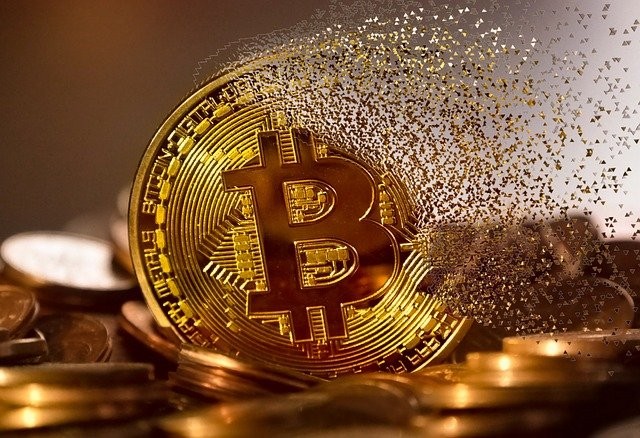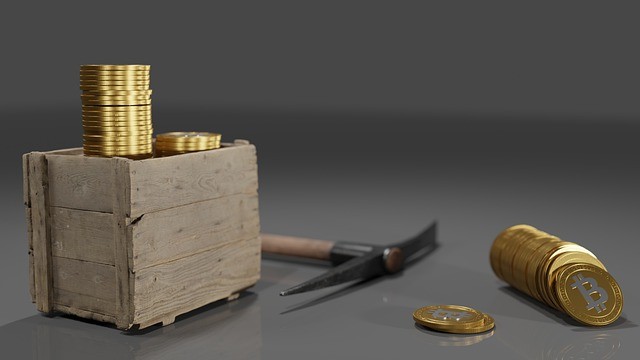As anyone who has paid any meaningful attention to the cryptocurrency market will tell you, the devil is always in the details. While public perception of the cryptocurrency market is that it exists like a homogenous whole — like the cryptocurrency rankings you see on coinmarketcap are no different from a Forex currency listing, with cryptocurrencies like Bitcoin and Ethereum and Cardano no more different from one another than the Pound from the Euro or the dollar.
They’re all just currencies, right? Different only in name, color, and value. But this vast oversimplification of cryptocurrencies and their evolving, highly specialized use-cases misses out on an entire world that exists under the hood of each currency.
Related: Proof of Stake vs. Proof of Work
What is Proof of Burn?

Here on Nerdschalk, we’ve talked about cryptocurrency quite a lot lately. We’ve put out a few guides on some of the bigger currencies, explaining how they work and how you can purchase some for yourself. We’ve talked about NFTs and how to invest in them. We’ve even talked about pure-blockchain topics like Forking and Sharding.
But we wouldn’t be writing about any of these things, and some guy in England wouldn’t be dreaming about the day he can finally go digging in the local garbage dump, if it weren’t for the consensus algorithms that made Bitcoin and other cryptocurrencies possible. Down below, we’ll run you through exactly what Proof of Burn is, how it works, and why some are suggesting it as a better alternative to Proof of Work than the widely supported Proof of Stake protocol.
Related: What is Proof of Authority?
How Proof of Burn Works

Proof of Burn derives its name from a process called Coin Burning, in which tokens are sent to public addresses without private keys, rendering them forever unretrievable. These public addresses, known as Eater Addresses, are often randomly generated without private keys – meaning no one ever had, nor ever will have access to the funds stored inside them. This is why the process is called “burning” — you’re essentially consigning a certain amount of currency to oblivion just as effectively as you would be by setting fire to all the notes in your wallet.
The Proof of Burn protocol was first put forth by Iain Stewart in 2012 during an online discussion in the BitcoinTalk forum, in which he described the proof of burn protocol as a less energy-intensive alternative to Proof of Work and Proof of Stake, while asserting its similarity in design to the latter.
Often seen as Proof of Work without any real power consumption and the hefty equipment costs on the part of the miners, Proof of Burn endows the minors of a network with virtual mining power, rather than physical, proportionate to the value burned. In a traditional Proof of Work protocol, miners on a network compete in a race to solve computationally-intensive cryptographic puzzles in order to validate blocks on the networks.
Only the correct answer to the cryptographic puzzle will produce the accurate record of the transaction to be added to the distributed ledger that is the blockchain. The crux of the Proof of Work algorithm is that it is computationally-intensive — i.e. costly — for the individual node to find the correct answer but essentially effortless for every other note on the network to process and verify that the answer is correct – achieving consensus and adding the block to the chain.
Because it requires investment — through power and equipment — to take part in the validation process and reap the rewards that come with it, miners are naturally disincentivized to engage in fraudulent behavior and support the network.
Proof of Burn essentially cuts out the physical hardware required to participate in the computational race to solve each puzzle and replaces it with a certain amount of virtual computing power commensurate to the amount of currency the miner verifiably burned. This retains the element of personal investment in the network on the part of the miner without driving up the total power consumption of the network, providing the same safeguards of Proof of Work without the economic footprint.
Advantages of Proof of Burn

The chief advantage of a Proof of Burn protocol is that it uses a fraction of the energy that a Proof of Work-based blockchain uses. Indeed, because of the aforementioned computational arms race that a Proof of Work algorithm cultivates between its nodes, mining on the network progressively demands more and more resources to participate in.
That means ever more powerful hardware and soaring electricity costs which, when put together in the context of the major networks like bitcoin can bowed pretty poorly For the environment. This concern remains a major talking point for the mainstream acceptance of proof of work-based cryptocurrencies like bitcoin, and by solving it, proof of burn can potentially increase the speed at which cryptocurrencies finally achieve widespread legitimacy.
Because Proof of Burn endows virtual mining power relative to how much the node burned, there is no need for expensive, top-tier processing power and the cataclysmic power bills that accompany it. This accomplishes a secondary goal as well: it allows new blockchains to bootstrap off of previously generated “work.”
Because a Proof of Burn protocol hinges on burning coins that have, of course, been mined, the original computing power expended remains a source of scarcity even in the second blockchain with an entirely new currency when using Proof of Burn this way.
Disadvantages of Proof of Burn

One of the most salient cons associated with a Proof of Burn protocol comes in the actual process of mining itself once coins have been burned. Mining on a Proof of Burn-based network can be slower than that of a Proof of Work-style blockchain. This is because the powerful equipment used in a Proof of Work Blockchain has been replaced with the virtual “mining rig” that the system endows, which inherently produces a lower hash rate than dedicated hardware setups.
A Proof of Burn protocol also poses an added risk to the individual miner; while Proof of Work is itself an incredibly risky venture, with immense upfront costs associated with achieving the computational power required for a viable mining operation, Proof of Burn provides no guarantee that the cost of the initial coin burning will be recovered through mining in a timely manner. Or at all. All the coin burn does is “purchase” you a virtual mining rig of a certain size; after that point, you’re in the same competitive mining race as any Proof of Work system.
As of yet, Proof of Burn also suffers from a similar drawback as proof of Stake, in which the system selects for those willing to immobilize or invest larger sums of currency — ostensibly as a means of collateral and disincentivizing any attempts fraudulent behavior.
This, of course, has some merit but the oft-pointed weakness of such a paradigm is that the selection process incorporates only the staked or burned amount, and not the amount relative to the holdings of the stakeholder or burner. Thus, what may be a considerably larger sum than another miner may in fact be much smaller in proportion to that individual’s total holdings, thus serving as a weaker guard against misbehavior than intended.
Still confused as to how proof of the words? No problem. Feel free to reach out to us in the comments down below and we will be glad to help you out soon as we can! Until then, check out our Blockchain and Cryptocurrency archives for all sorts of other crypto-related guides, explainers and walkthroughs.
RELATED
- What is One-Way Hashing?
- What is a dApp?
- What is a Smart Contract? How Does It Work?
- Why is Ethereum Dropping? 3 Top Reasons
- What Is Ethereum and How Does It Work?






Hi There,
I hope you are doing well. I need to post on your website . Please tell me each post price. I shall be very thankful to you for this act of kindness.
Best Regards